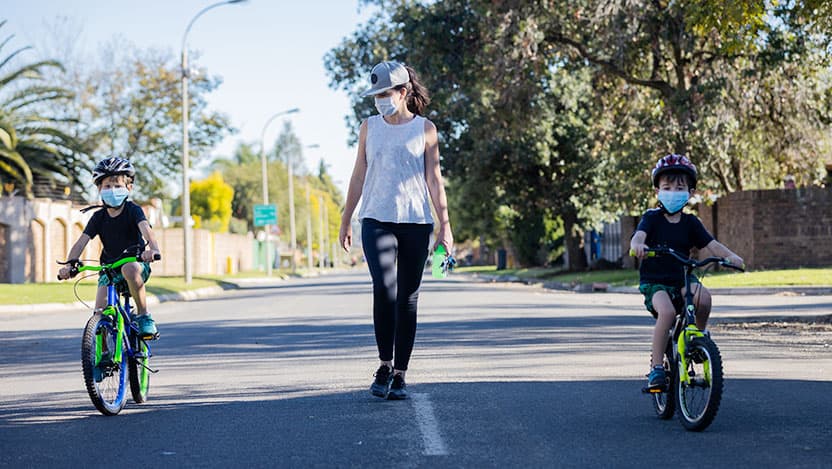How to help young people stay connected

With in-person school closures and the rise in hybrid learning models, young people have lost their primary place for socializing. Staying healthy by social distancing has added another hurdle to the much-needed time for positive social connection. While kids are physically away from each other, it’s still important to help foster social interactions and maintain friendships to nurture emotional growth and to lessen the anxiety caused by isolation and disconnection.
As a child and adolescent clinical psychologist, I work with families to maintain children’s mental and physical wellbeing. While children have the unique task of coping during a pandemic, we must work together to find equally unique ways to not only alleviate the strain of a changing world, but to foster opportunities for their growth.
Why do young people need social connection?
The old and young alike can benefit from social connection. When toddlers interact with others their age, they gain emotional skills and decrease stress. Furthermore, during school-age and adolescence, social relationships are an important developmental task to master. At age-appropriate levels, they learn how to communicate, resolve conflicts, contribute to society and resist negative peer pressure. It is through these relationships that young people learn how to begin and end relationships, gain a sense of belonging and practice the interpersonal skills that they will take into adulthood.
What are some fun ways to keep kids connected?
Write letters
It may sound archaic, but encouraging your child to send their friends letters can be rewarding. Not only will it help practice writing skills, it can also be a lesson on sending and receiving mail and allow your child to receive a piece of mail just for them.
Bike riding
When the weather permits, go on a bike ride with one or two other children. Be sure to ride slowly so that the children can wear masks without any breathing obstruction. They will also want to maintain social distance and sanitize their hands if they can’t wash them while outdoors.
Pay it forward with friends
When the weather permits, gather outdoors to create care packages for friends, family or for people in need. Have fun and be creative with this experience. If possible, you could deliver it as curbside delivery and say “hello.” Doing good boosts happiness and wellness.
Virtual hangouts
By now, you’re no stranger to virtual hangouts. Scheduling a weekly Friday night movie watch party or Saturday morning crafting with friends will also give children something to look forward to throughout the week.
Neighborhood scavenger hunts
While this activity may sound daunting, it can be pretty easy. Parents can download printable scavenger hunt cards and take children out to check off their finds. The children can then log on to Zoom with their friends and compare notes.
Talk to family on the phone
While technology has made it easier for us to see each other, sometimes a simple phone call can do. Calling grandparents once a week or talking with cousins on the phone can be another way for children to connect.
Online gaming
Allowing time for children to play online games with friends can be another opportunity for social connection. While screen time can be of concern, and online gaming can be a treacherous place, parental controls can help make it a safe environment. Even for youth older than 13 years old, discussing boundaries and staying safe can keep online gaming an enjoyable social experience.

Sonya Dinizulu, PhD
Sonya Dinizulu, PhD, is a child and adolescent clinical psychologist.
